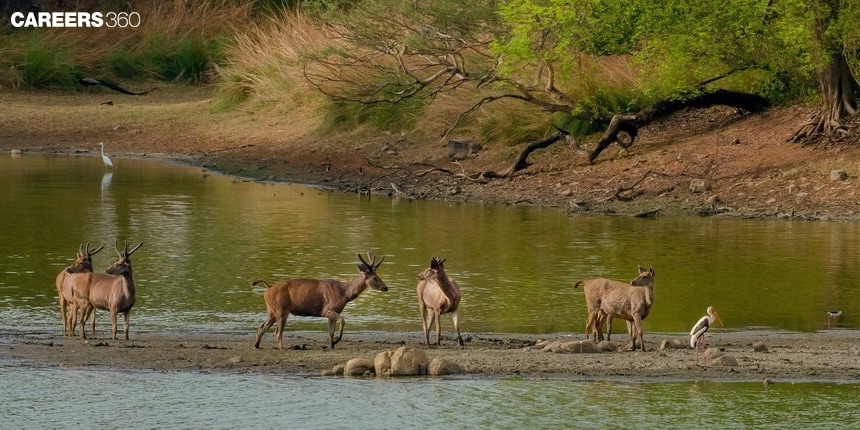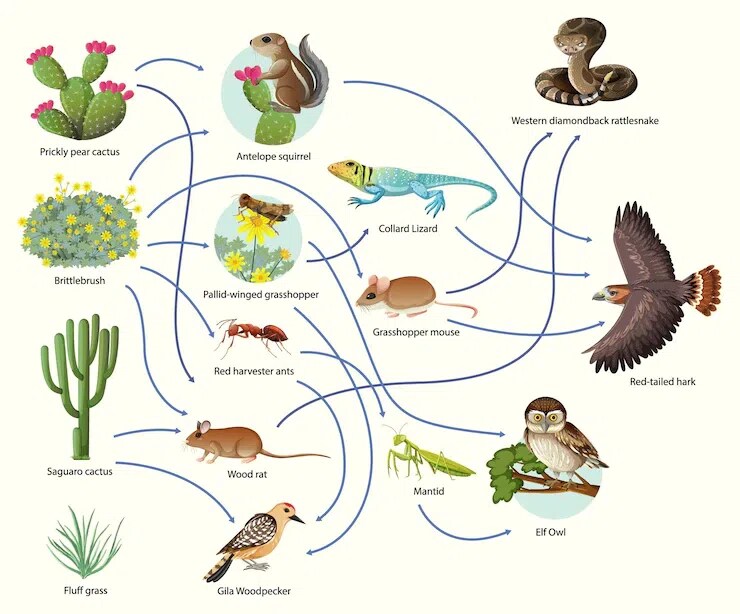Species Diversity: Definition, Importance, Examples, Types
Why Is Species Diversity Important?
Species diversity can thus be defined as the richness of the particular species existing in a given locality or environment. It refers to both, the number of species that is the species richness and the distribution of these species or species evenness. The diversity of species in a given ecosystem is very important because it increases efficiency in resource utilization, and nutrient cycling as well as the ability to adapt and respond to dynamic environments. Thus, proper species composition contributes to the ability of ecosystems to recover from disturbances and continue providing their functions.
NEET 2025: Mock Test Series | Syllabus | High Scoring Topics | PYQs
NEET Important PYQ's Subject wise: Physics | Chemistry | Biology
New: Meet Careers360 B.Tech/NEET Experts in your City | Book your Seat now

Types of Biodiversity
Biological diversity is recognized as being of three major levels.
Genetic variation is the amount of genetic material variation in a species for evolution and adaptation.
Species diversity, as pointed out earlier, is defined as the creation of species within a given location.
Measuring Species Diversity
The measurement of species diversity is explained below-
Species Richness
Species richness is the total number of species in a sample or a given geographical area. For instance, within a small sample of a forest, the species density could be defined by the number of plant species present.
How To Calculate Species Richness
Just think of a survey being done in an area that is mostly covered with forestation. In this, they quantify the number of different tree species recorded in a given piece of land of a given size. If you identify ten species of trees in that plot, then the species richness for the given area is ten.
Species Evenness
The second one is species evenness, which determines to what extent the number of individuals is dispersed among different species in the designated community. For instance, when several trees have been counted for the same plot of the forest and following the distribution of trees according to species, there can be many trees of only one species and few or no trees of other species, this indicates that the extent of species evenness is low.
Importance Of Species Evenness In Measuring Diversity
The concept of high evenness means the equal distribution of individuals in species to point to a stable and sustainable ecosystem. They supplement the species richness by informing the researcher on the proportion of each species in the community.
Recommended video for Species Diversity
Importance Of Species Diversity
The importance of Species Biodiversity is explained below-
Ecological Balance
There is also the importance of species diversity which measures the ability of ecosystems to produce stable food webs, nutrient recycling, pollination and predator-prey relationships. The food chain displays the relationship of species one with the other and their contribution to sustaining the functioning and the existence of other species.
Diagram: Food Web Showing Interconnected Species

Economic Benefits
Habitat and species diversity offer offers such as food, and medicine to human beings and raw materials for industries like agriculture and pharmacy. Other ecosystems support recreation and tourism which forms the source of income for people within jurisdictions.
Cultural Significance
The diversity of species maintains the social history and culture of the original inhabitants of a particular area through communication with their environment. The conservation of diverse species is vital since it supports practices which are passed down culturally as well as enriches one’s perception of the balance of power between humans and nature.
Threats To Species Diversity
The threats to Species Biodiversity is explained below-
Habitat Destruction
Habitat destruction continues to be a major difficulty in the conservation of species; this is due to activities such as deforestation, urban and rural expansion and intensive farming. These activities break up habitats, decrease the availability of resources, and push wildlife, which in turn decreases population and leads to the emergence of species extinction.
Climate Change
Global change modifies the environment and scales its impact on species distribution, activities and existence. Global warming through increases in temperature, changes in the pattern of rainfall and even the rise in sea level pose great dangers to species that have adapted to certain conditions and hence will experience a reduction in their population and even extinction.
Invasive Species
This is an invasion that is brought about by human factors such as the introduction of foreign plants and animals that affect and overcome the native species in terms of resource acquisition, and alter the food chain and ecosystem. Some examples include the zebra mussel species in water streams and the lionfish species in the seas where they wreak havoc on other Indigenous species
Overexploitation
Overexploitation is the process by which certain species are hunted, caught, gathered or in any other way used at a rate which cannot be replenished. Certain actions such as overfishing, poaching and deforestation reduce quantities and bring certain species to danger of extinction. This endangers species diversity and affects the stability of ecosystems and their elements.
Case Studies
The case studies are explained below-
Amazon Rainforest
The Amazon rainforest faces threats like clearing of forests for agriculture, logging, mining, especially by non-legal means and global warming. These pressures threaten numerous species suited to the specific ecosystems, it supports.
Conservation Efforts: Measures include securing conservancies, indigenous territories and sustainable use activities. Integrated initiatives focus on balancing the reduction of deforestation, advocacy for Indigenous people’s right to their land, and practices that ensure that the threat of climate change is checked through the preservation of the balance in the ecosystem.
Frequently Asked Questions (FAQs)
It is a measure of the number of different kinds of species that inhabit a specific geographical region. It becomes relevant because; The various ecosystems are better placed to cope with environmental change, are hosts to numerous ecosystem services like pollination, and nutrient cycling and are sources of economic items like foods and medicine, apart from holding cultural values that include policy of traditional knowledge and beliefs.
Species diversity is typically measured using metrics such as:
Species Richness: The total variety of species that live in one particular region.
Species Evenness: Their proportions in a community, which explains in a broad way how individuals are partitioned between species.
Several factors influence species diversity, including:
Environmental Factors: Resources such as food and water, structure of the habitat, and climate.
Biotic Interactions: Hunting, fighting for food and power and mutualistic behaviour.
Human Activities: Sustainable use of resources and maintain organism populations: Habitat fragmentation, destruction including for example deforestation, pollution of physical surroundings, introduction of alien species and overexploitation for commercial purposes.
Natural Events: Other factors include natural calamities including wildfires, floods and droughts that affect species diversity.
The primary threats to species diversity include:
Habitat Destruction: Deforestation to support such activities as farming and production of crops for food, expansion of cities and towns, and development of buildings and roads.
Climate Change: Changes habitats and the life cycle of the species, which will cause a change in species distribution and potentially some species could be made extinct.
Invasive Species: They can replace native species in their access to the resources due to the invasive nature of non-native species.
Overexploitation: Excessive hunting or fishing and over-exploitation of species mean that particular species will be rendered extinct.
Conservation efforts focus on:
Protected Areas: Setting out and consolidating forests, wildlife and reserves for the protection of plant and animal life.
Conservation Programs: Efforts to put into practice some of the biological plans formulated to ensure realization of species conservation, restoration of broken habitats as well as biological nature conservation practices.
Legislation: Regulations of the legislation for the protection of species on the verge of extinction and their habitats.
Community Involvement: Participating in local communities in conservation programs, encouraging the adoption of sustainable measures, and sensitising the public on the need to embrace the conservation of species diversity.
Also Read
26 Nov'24 05:49 PM
23 Oct'24 07:58 AM
18 Sep'24 02:15 PM
18 Sep'24 02:14 PM
14 Aug'24 11:39 AM